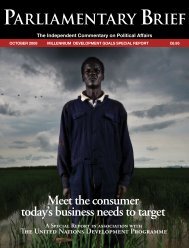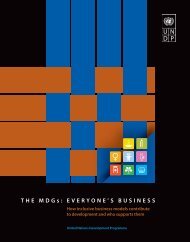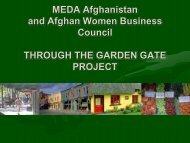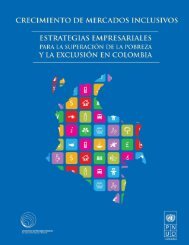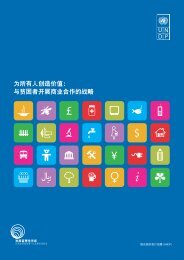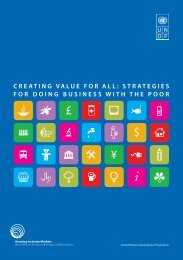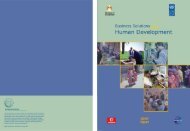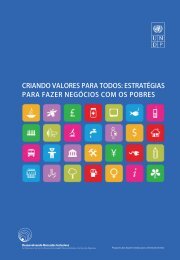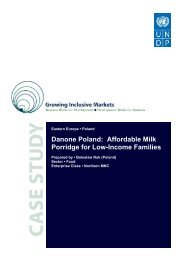Iran Kandelous 2011 - Growing Inclusive Markets
Iran Kandelous 2011 - Growing Inclusive Markets
Iran Kandelous 2011 - Growing Inclusive Markets
You also want an ePaper? Increase the reach of your titles
YUMPU automatically turns print PDFs into web optimized ePapers that Google loves.
For the export sector, there are companies and merchants in countries such as United ArabEmirates (UAE), Macedonia and Canada which bring the products to regional markets. Due to thenature of the products, entering foreign markets requires quality tests by government authorities.For example, Bohum laboratories in Germany and the UAE Ministry of Health have to approvethe quality of the products.HERBAL PRODUCTS“Be Healthy, With Nature”, <strong>Kandelous</strong> Group’s SloganHerbal (or botanical) medicines and dietary complements have been known for their healthbenefits for centuries in Middle Eastern countries, including <strong>Iran</strong>. Even in modern days, theirseeds, essence or dried leaves, flowers and roots are sold in the form of capsules, syrups, powder,tea, etc.The global interest in herbal medicine has been increasing in recent years for several reasons.First of all, these products are sometimes cheaper that chemical ones. Second, it is generallybeleived that the side effects of natural products are lower than artificial ones. According to theWHO more than 80% of the world's population is consuming some type of herbal medicine intheir daily life.Although the plants in dried form are valuable enough, taking a profitable perspective, byproducing value-added products such as soaps, shampoos, cosmetics, drinks and essential oil theproducer can gain a much higher profit. Therefore, combining plantation and processing is theright strategy for entrepreneurs in this field.Global and Domestic Market for Herbal ProductsThere is a range of estimates for the size of global and domestic markets for herbal products 4from US$8 billion 5 to US$18.5 billion 6 . According to A. Haji Akhundi, the coordinator of the<strong>Iran</strong>ian initiative for commercializing herbal medicine, currently 120,000 acres of lands in <strong>Iran</strong>are allocated for the cultivation of medicinal plants. 7 There are several other <strong>Iran</strong>ian herbalmedicine companies other than <strong>Kandelous</strong> in <strong>Iran</strong> including Barijessence, Sahajisa, Ghaem-Darouand Cheshme Damavand (Damavand Spring) who produce similar products than <strong>Kandelous</strong>Group. In terms of production they use similar production processes while the distinguishingfactor for <strong>Kandelous</strong> Group is to combine herbal business with rural tourism and also be muchmore diversified than just one business line. Furthermore, <strong>Kandelous</strong> Group produces a widerange of herbal products including foods, drinks and cosmetics whereas most of its competitorsfocus on medical items.4 It was not possible to obtain official estimates on market size, so the report relies on available sources5 http://webiica.iica.ac.cr/TrinidadandTobago/ppt/Globalherbal.ppt6 http://bio.itan.ir/?ID=247 http://www.khorasannews.com/news.aspx?12_17362_11_1304.XMLCase Study ● <strong>Kandelous</strong> Agro-Industry Group 8






